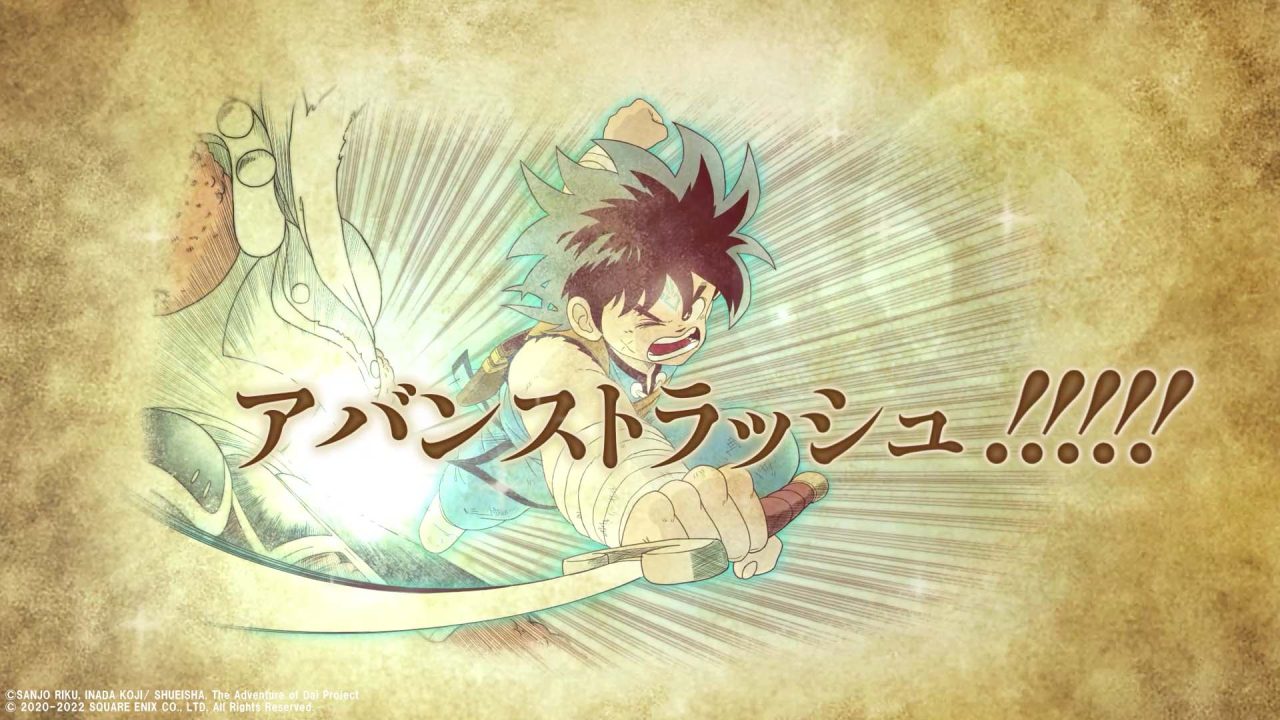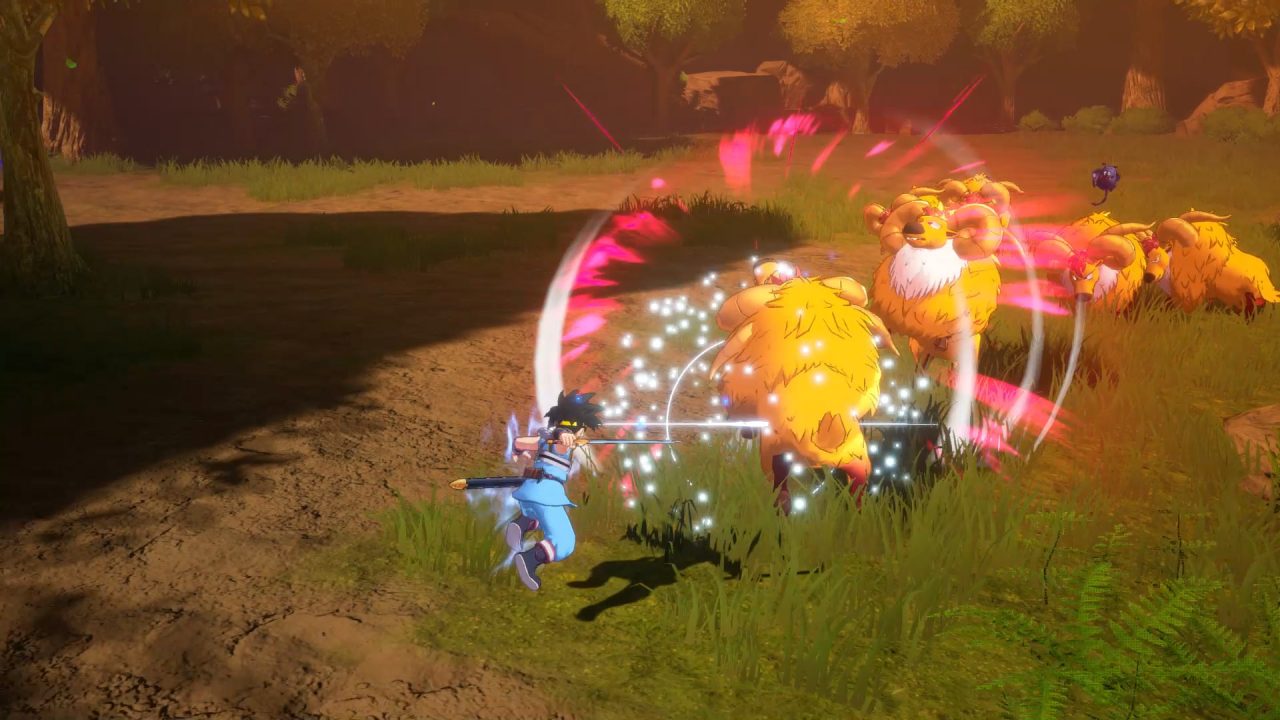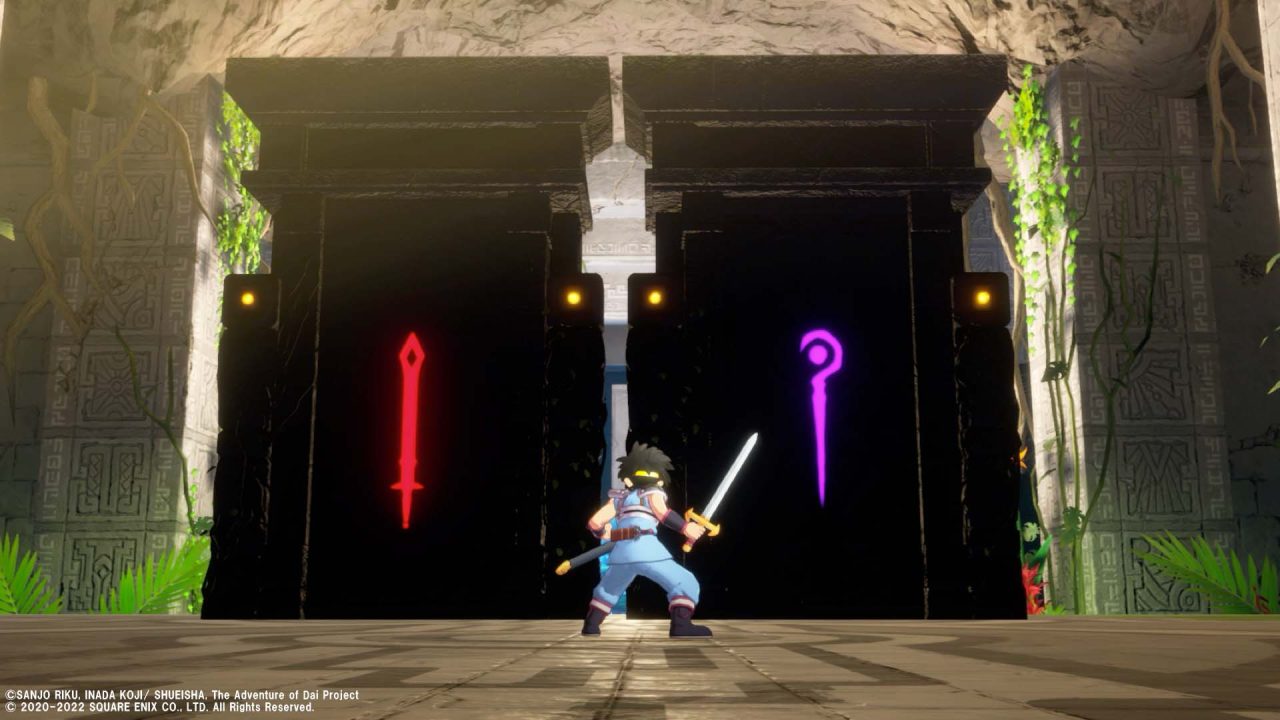Dragon Quest’s connections to manga and anime run deep. Series creator Yuji Horii started his career as a writer for Shonen Jump and chose Akira Toriyama as the series artist due to this connection and the popularity of Toriyama’s series Dragon Ball. It seems almost inevitable that Dragon Quest would have its own Jump adaptation, and that’s exactly what happened in 1989 with the start of serialization for Dragon Quest: The Adventure of Dai. The manga series wasn’t written by Horii, nor did it have art by Toriyama, but it was a huge success in its own right anyway. The series was mostly unknown to Western Dragon Quest fans, but the series saw a new anime adaptation in 2020 and a new push for a global audience. With that push comes a freshly English dubbed release of the anime on streaming platforms and a worldwide release of a video game adaptation, Infinity Strash: Dragon Quest The Adventure of Dai. The Dragon Quest series is no stranger to spin-off titles, but Dai is unique as an adaptation of a manga and anime series that reimagines the video game series. Unfortunately, Infinity Strash is much more similar to a low-effort anime tie-in game than an authentic Dragon Quest experience.
Prior to playing Infinity Strash, I had very little familiarity with the source material. I had read the first volume of the manga when it became available in English out of curiosity, but that’s it. This proved not to be a hindrance, as the game is a beat-for-beat retread of events in the anime series. It begins with Dai’s first adventures on Dermline Island long ago, where he washed up on shore and was raised by benevolent monsters. The tranquility of the island is shattered as more and more human visitors arrive: first Princess Leona and then the Hero Avan and his disciple Popp. Dai quickly becomes friends with Leona and trains with Avan and Popp to hone his latent abilities so he can become a hero one day. His training is interrupted when Hadlar, the Dark Lord Avan defeated many years ago, suddenly returns and kills Avan. Popp and Dai leave Dermline Island to seek revenge for their former master, traveling to various kingdoms and meeting new allies as they root out the forces of evil.
What really struck me about Infinity Strash‘s storytelling is how rushed the beginning of the game feels compared to the rest of the chapters. I hardly played more than 20 minutes by the time Hadlar showed up for his showdown with Avan. This is a problem because Avan’s death and Dai’s desire to avenge him is the central driving force of the plot. Had I not read the beginning of the manga series prior to playing the game, I would have found it difficult to care at all or buy into the mentor/student bond between Dai and Avan. By comparison, most of the other story arcs feel drawn out, with copious amounts of dialogue (fully voiced) over static images taken from the anime.
The storytelling is standard action anime fare, with lots of duels interrupted by long speeches about the power of friendship, last-minute rescues, and villains so moved by the goodheartedness of the plucky hero that they switch sides. Characters tend to call out the names of their attacks, a common anime trope made even sillier when those attacks are staple Dragon Quest spells like “Kafrizz,” “Squelch,” or “Bang.” The storytelling just doesn’t have the same charm or emotional payoff as a traditional Dragon Quest game. I can’t imagine that anime fans would enjoy sitting through hours of static images and dialogue going over the exact events they already watched, either.
Story mode is divided into chapters that follow the main arcs of the anime storyline, where you select missions from the world map in linear order. About half of the missions are the story scenes, and the other half are gameplay segments. The game is ostensibly an action RPG, albeit an incredibly simple one. Combat centers around your main combo—executed with the square button—and special attacks or spells assigned to the remaining face buttons and right shoulder button. The left shoulder button is a block, and the X button is a short dodge with invincibility frames. There is a strong focus on blocking or dodging attacks with perfect timing, which builds your super meter and unleashes a powerful Coup de Grace attack unique to each character.
The combat mostly feels good and has responsive controls, but the game never evolves from this basic setup. New skills build slowly, most are some form of projectile attack, and they all have fairly long cooldowns. Animations tend to be pretty slow and cannot be canceled, making it difficult to create combos with skills. Encounters against regular enemies are incredibly basic, button-mashing affairs. Duels against larger enemies or bosses are more engaging, as they have a wider variety of attacks and must have their guard broken before the player can deal significant damage. Some battles, like the fight against Flazzard or the final boss, introduce unique mechanics or a grand sense of scale. However, by the end of the game, even the one-on-one duels begin to feel stale.
One of Infinity Strash’s greatest failings is how strictly it adheres to the scenarios of the anime. Dai eventually unites the 4 Disciples of Avan, and you can bring the entire party of characters to the battlefield and switch between them at will in a handful of side missions. On the other hand, most of the required story missions are restricted to a single character, so you can’t take advantage of any team composition or other character movesets. This lack of flexibility extends to the RPG elements as well. Characters gain experience and level up, and skills can grow with resources awarded by completing story missions. Most of these upgrades are just 10% increases in damage, and there isn’t any way to influence character stat growth. There isn’t any traditional equipment like weapons or armor, but you can equip items to characters called Bond Memories instead. Bond memories are panels from the manga series with various stats or modifiers attached. This system is the central way the player influences the characters, but most of the effects are pretty lackluster outside of the highest rarity bond memories.
Infinity Strash attempts to extend its longevity beyond the story mode through the Temple of Recollection. This area is accessible from the menu at any time and allows you to upgrade your skills or bond memories. Additionally, the Temple of Recollection houses a rogue-like mode where your characters are reset to level one and you can descend the various floors to gain resources for upgrading bond memories. Each floor gives you a choice between different modifiers to strengthen the main party. Each floor is an arena where you fight various monsters, sometimes under a time limit or other constraints. The good thing about this mode is that you can bring the entire party, allowing you to experiment more with the combat and various movesets. Still, the simple combat system and reused enemies from the story campaign simply aren’t enough to keep this mode engaging for long.
One nice aspect of Infinity Strash is the presentation, though this is also a mixed bag. The familiar Dragon Quest monsters are modeled and animated lovingly, and the occasional in-engine cutscenes used to cap off climactic moments in the story are impressive. There are even some nice touches during gameplay like trees being cut down in the background if you execute a particularly large and damaging attack. The level design (or lack thereof) really lets down the presentation, though, as most areas are only glorified corridors or flat, empty battle arenas. Despite the game’s impressive visuals and good voice performances, it ends up feeling very cheap due to the limited environments and repetitious static image story scenes.
I came away from Infinity Strash feeling that this game is the absolute worst way to experience Dai’s story. The story sequences don’t do the action scenes or character interactions justice the way high-quality animation would, and the simple, repetitive combat encounters don’t offer a substantial experience on their own. The best thing I can say about the game is it made me more interested in watching the anime, but as a Dragon Quest title, the game falls well short of the standard set by other series spin-offs.





